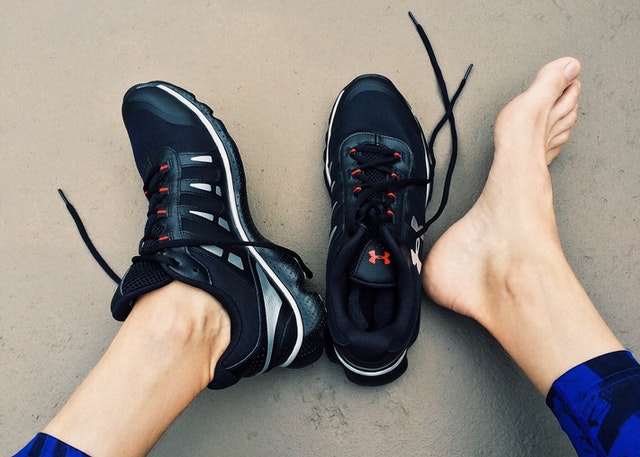Your feet take on the brunt of moving you around from day to day, taking on the wear and tear that comes with standing, walking, running, and exercising. But when they start to cause you pain, they can often limit you in your daily activities. One of the most common conditions that affect your soles is plantar fasciitis. If you’ve been in the recovery process for some time now, you might be frustrated at the slow progress. Slowly but surely, however, recovery can come with the proper physical therapy techniques. Here are 3 signs your plantar fasciitis is healing.
What is Plantar Fasciitis?
As we learned in our previous post on fascial counterstrain, fascia is a dense type of connective tissue that surrounds and holds every organ, blood vessel, bone, nerve fiber, and muscle in place. The tissue does more than provide internal structure; fascia has nerves that make it almost as sensitive as skin and the ability to contract like a muscle. However, plantar fascia refers explicitly to a piece of thick connective tissue (organized as a ligament) that supports the arch of your foot. Although located on the bottom of the foot, it strongly influences the muscular tension in the toes, calf, and buttock. This tension reflected across the hip, ankle, and toe joints influence the quality and ease of all functions—walking, climbing, squatting, and reaching. Its architectural design helps direct, balance, and transmit your movements from the ground up—the term “plantar” refers to your arch. Plantar fasciitis refers to a condition where the ligament on the underside of your foot is inflamed.
With inflammation comes edema or swelling and lots of pain—it’s the main symptom of this condition. Patients often feel the most pain in the morning, right after getting out of bed and taking their first steps for the day. In general, you may feel the pain very strongly when inactive for a while, whether you’ve been sitting or lying down.
Ankle stiffness is another symptom. Climbing stairs is often difficult as a result.
Similarly, after long periods of activity or exercise, you might feel more pain due to increased plantar irritation.
There are many different causes for plantar fasciitis. Silently yet chronic progressive decreased toe and ankle mobility often precede the symptom of heel pain. You might be at a higher risk for plantar fasciitis if you stand for long periods, practice long-distance running, suffer from high arches or flat feet, or wear shoes with poor heel support. This pressure can lead to strain, tears, and other forms of damage in the plantar fascia.
3 Signs Your Plantar Fasciitis is Healing
Pain is often the most debilitating symptom of the condition. Many of these signs refer to the changes in pain intensity and location.
- Less Foot Pain in the Morning
As we mentioned, your pain will often be higher when you take those first steps of the day. If you feel less and less pain in the morning, consider this a great sign of healing. In general, however, experiencing less plantar fasciitis pain overall is one of the most promising signs your plantar fasciitis is healing.
- Pain Near Your Heel
In more extreme cases, your symptoms can include pain and stiffness in the heel, the arch of your foot, and your ankle. If pain is now limited to the heel, this is a good indication that the plantar fascia is recovering.
- Less Pain and Ankle Stiffness While Walking
Since plantar fasciitis affects one of the essential body parts in walking—your feet—the rest of your body can also suffer as a result. The condition often forces you to alter your gait to avoid pain, putting more pressure on the knees, hips, and lower back. If your plantar fascia is healing, you may experience more mobility in these areas and hurt less and less since you are no longer compensating for your foot pain.
Plantar fasciitis can take the joy out of life, but you don’t have to live this way forever. A physical therapy treatment such as fascial counterstrain can help put delight back into your everyday movements. The technique maximizes the body’s healing by normalizing muscular tension, vascular drainage, blood flow, and neural input. To explore and develop the right treatment option for your situation, please get in touch at 812-344-4119.

